Pothos
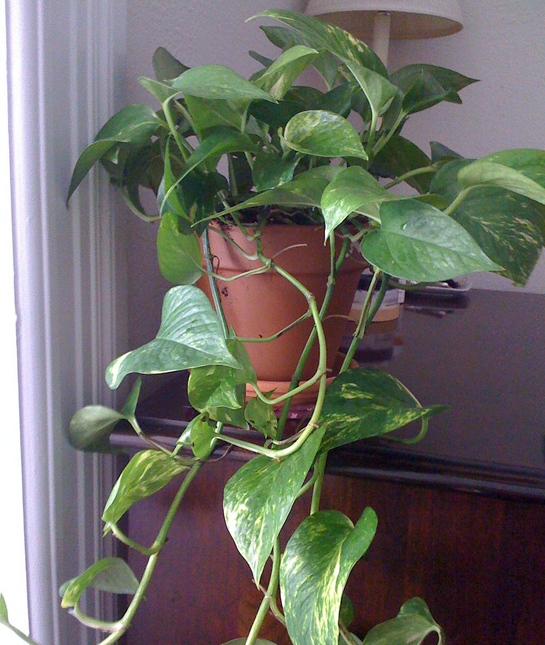
Pothos, a long, leafy vine, is known as one of the easiest houseplants to care for. Indoors, it prefers indirect but bright light, and generally grows up to about six to ten feet. Bonus: Pothos also helps purify air and remove toxins.
Photo via Flickr/Amanda
Jade Plant
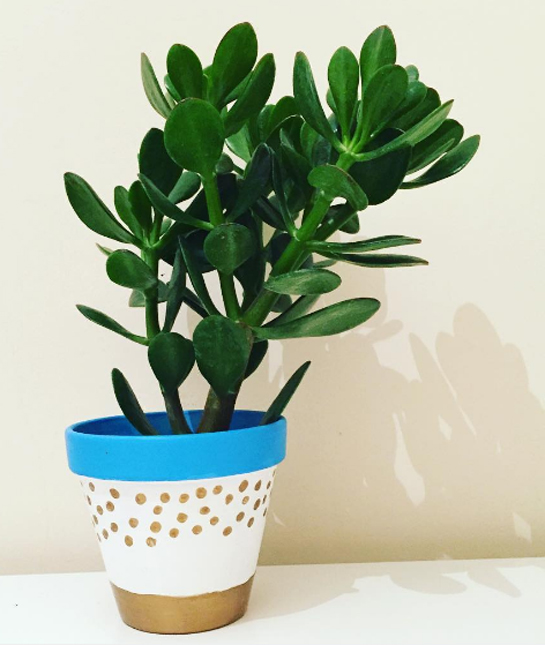
If you don't like watering, a jade plant is a great option. It needs bright light and just enough moisture to keep its leaves from getting shriveled during the winter. It's also considered by Asian cultures to be a symbol of fortune, and is often used in Japanese Feng Shui design.
Photo via Instagram/gillt90
Snake Plant
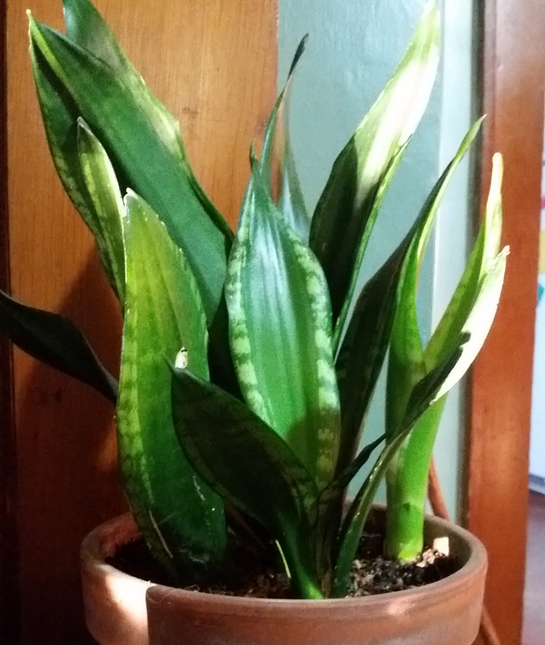
The snake plant is more or less indestructible. Root rot, which comes from overwatering, is the only problem you might encounter with a snake plant. It comes in tall forms as well as shorter forms that look more like a bird's nest.
Photo via Flickr/madaise
Kalanchoe
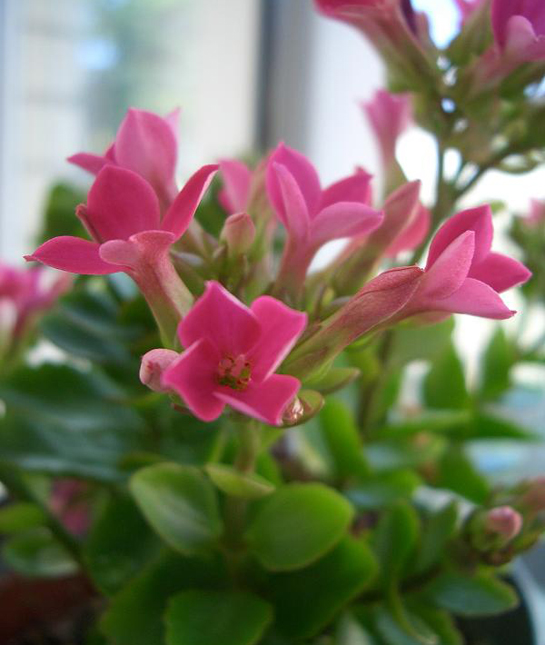
With colorful flowers that can last several months, kalanchoe brings a bright touch to any indoor space. It does well in low humidity and lots of light, and blooms during the short winter days.
Photo via Flickr/anneheathen
Cast-Iron Plant
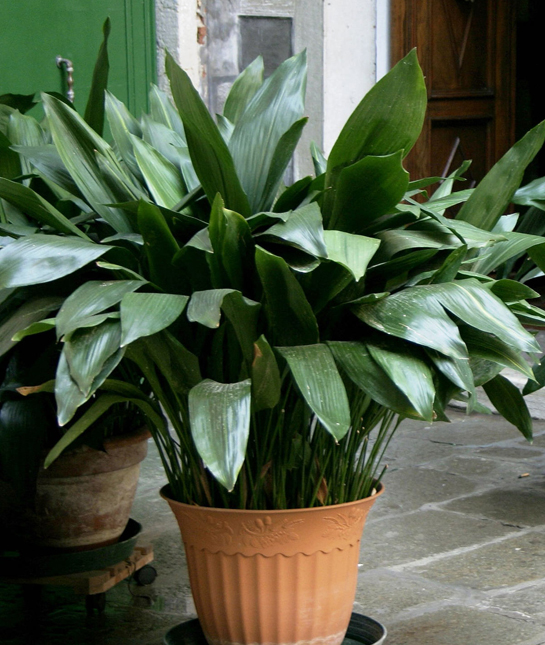
Another hardy option, the cast-iron plant can deal with both lack of water and lack of light. The perennial tends to grow slowly and can withstand all different temperatures. Some types have cream or yellow variegation on the leaves, but these tend to be a bit more delicate than the normal dark green variety.
Photo via Flickr/TownePost Network
English Ivy
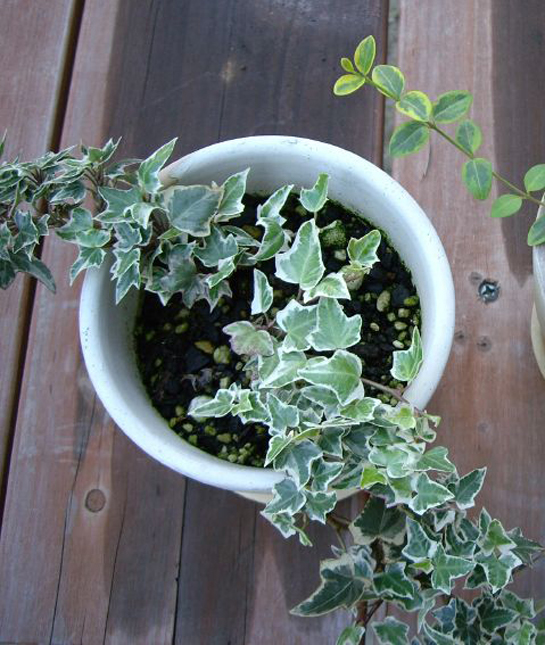
English ivy is often grown outdoors as a ground cover, but also works well inside. Though it will grow slowly in the first year or so after you plant it, by the end of year two it'll climb and cover almost any surface. Be careful if you have small children or pets—all parts of English ivy are poisonous, so you should keep them up high and out of reach.
Photo via Flickr/Miyo Sekimoto
Spider Plant
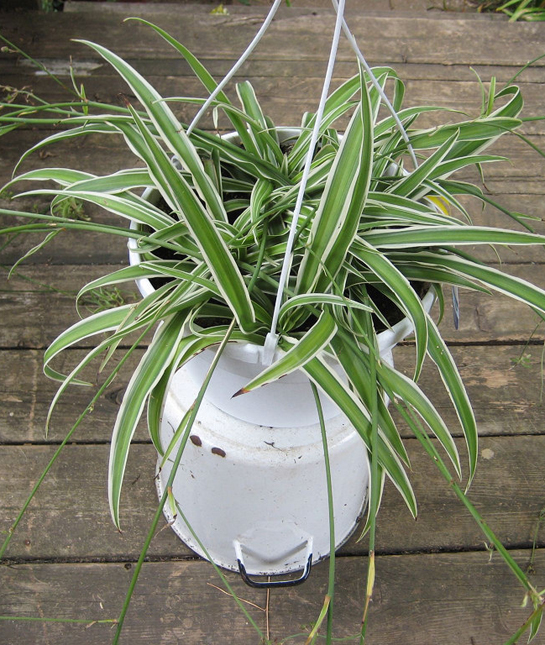
The spider plant comes in a huge range of varieties, and all work well as hanging plants. It takes its name from the "spiderettes" that grow off of the main plant and resemble—you guessed it—spiders. You might notice the tips of its leaves turning brown, which likely comes from fluoride in the water and shouldn't cause concern. Leaching the plant (giving it a thorough watering) can help.
Photo via Flickr/madaise
Rubber Tree

Named for its sticky and plentiful sap, the rubber tree is a dramatic option that can grow extremely tall. It needs full to part sun, and shouldn't be kept in a room that gets direct sunlight all day long. The rubber plant loves watering and moisture, though yellow or wilted leaves are a sign that you've gone a bit too far.
Photo via Flickr/currystrumpet
Peace Lily

The classic, pretty peace lily prefers low light and low humidity. If it starts to droop, you'll know it's time to water. Look for the white flower to bloom during the spring season.
Photo via Flickr/Liam Moloney
Aloe

Aloe is a great kitchen plant. It loves sunny spaces, and its leaves release a skin-soothing gel that's a perfect antidote for minor burns. You can also juice aloe! Another plus: Aloe plants have air-purifying qualities.
Photo via Flickr/Kim MyoungSung
Dieffenbachia

Dieffenbachia's cool variegated leaves bring a tropical look to any space. The plant does best in filtered light and doesn't need too much water. Its leaves are poisonous and can severely irritate the mouth and throat, so keep it away from young children and pets.
Photo via Flickr/Maja Dumat
Dracaena

Some varieties of dracaena have solid green leaves, while others have interesting white, red or yellow stripes. An upright plant, dracaena can grow up to six feet tall. It tolerates low light and low humidity, and can even withstand a few forgotten waterings.
Photo via Flickr/Cascadian Farm
Bromeliad

Though the tropical bromeliad looks exotic—its thick leaves grow in a rosette and it can produce stunning flowers—it's actually very easy to take care of and requires no special fertilizers or care. Bromeliad doesn't tend to live very long, but does produce pups that can grow into full plants.
Photo via Instagram/lokeydesigns
Heartleaf Philodendron

With sweetly shaped leaves and a tendency to vine, the heart-leaf philodendron is easy on the eyes—and even easier to take care of. It also propagates without much trouble. Just put some stem cuttings in a glass of water and watch it sprout roots and grow.
Photo via Instagram/internationalaroidsociety
Madagascar Dragon Tree

Though the Madagascar dragon tree is slow-growing, it can eventually reach up to six feet tall. It does well in light shade and moist soil, and while we don't recommend trying this out, it can stand up to significant neglect.
Photo via Flickr/Stephanie Vacher
ZZ Plant

Officially known as zamioculcas zamiifolia, the ZZ plant prefers bright to moderate indirect light but will do just fine in even the lowest light. This makes it ideal for spaces without windows. Overall, it does best when you leave it alone. In fact, overwatering is one of the few ways you can kill it.
Photo via Flickr/Suzanne Marije Cornelissen
Schefflera

The umbrella tree is the most popular type of schefflera, which needs medium light and occasional pruning. It is vulnerable to overwatering, so keep an eye on its leaves. If they start turning yellow, you'll know it needs to dry out.
Photo via Instagram/ayanas.jp
Fiddleleaf Fig

Named for the distinct shape of its large leaves, the fiddleleaf fig is a distinct tree that will add drama to any indoor space. It needs medium to bright light, and should dry out between waterings.
Photo via Flickr/Emily May
Peperomia

The small peperomia comes in lots of different varieties, all with waxy and textured leaves. Red-edge, ripple and watermelon are especially easy to care for and aesthetically pleasing. Peperomia does best in low to medium lighting, but can also grow under fluorescent light.
Photo via Flickr/Akos Kokai
Hoya

Also known by the name "wax plant" for its waxy green leaves and pink flowers, hoya grows long vines and can live for many years. Its attractive flower clusters are also wonderfully fragrant. It doesn't need much water and does best in medium to bright light.
Photo via Flickr/Lenora Good
Ponytail Palm

The ponytail palm is actually a succulent, and can do fine without water for long periods of time. Its thick, unique trunk actually stores moisture that helps keep the plant healthy. Keep it from getting too large by putting it in a pot just slightly bigger than the base of the trunk.
Photo via Flickr/Smokey Combs
Chinese Evergreen

With interesting, variegated leaves, Chinese evergreen looks great on its own or as a ground cover for a taller tree. The slow-growing plant does well in low light and is very tough in general.
Photo via Flickr/Marissa Anderson
Cactus

Cacti come in all sorts of fun varieties, all of which have a durable nature in common. They do well in bright sun, and need very little moisture. In fact, overwatering is the easiest way to kill a cactus.
Photo via Flickr/Neil Tackaberry
Crown of Thorns

Its unique stems make crown of thorns attractive even when it isn't flowering. Its flowers, which bloom during the winter, are usually red, but also come in white, pink and yellow. Crown of thorns is another easygoing plant that can survive a significant amount of neglect.
Photo via Flickr/prin_t
Boston Fern

Though the Boston fern might look delicate, it's actually hardy enough to survive for decades. It does well in hanging baskets and needs high humidity, cool temperature and indirect light to thrive.
Photo via Flickr/bfishadow




